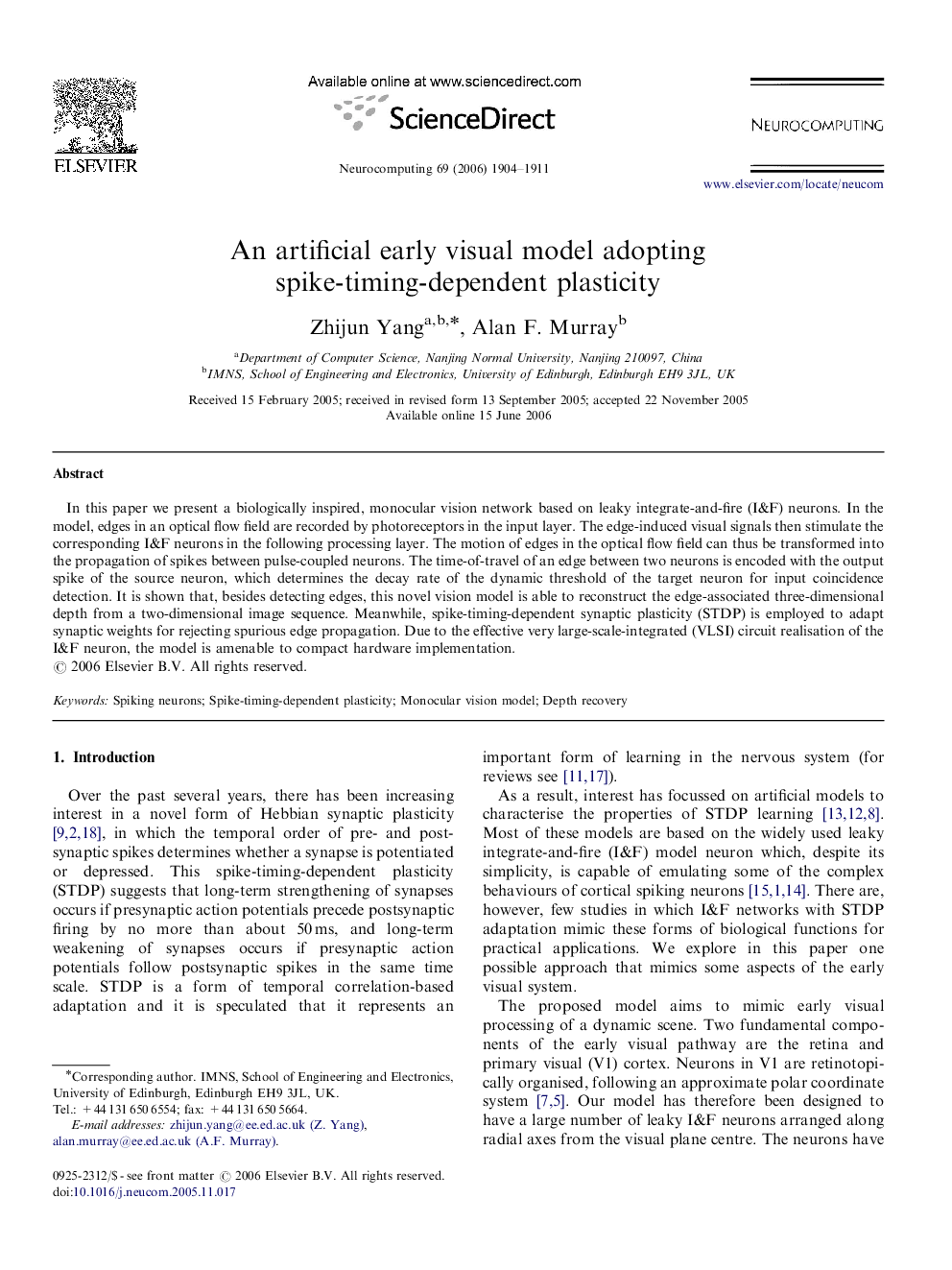| Article ID | Journal | Published Year | Pages | File Type |
|---|---|---|---|---|
| 410970 | Neurocomputing | 2006 | 8 Pages |
In this paper we present a biologically inspired, monocular vision network based on leaky integrate-and-fire (I&F) neurons. In the model, edges in an optical flow field are recorded by photoreceptors in the input layer. The edge-induced visual signals then stimulate the corresponding I&F neurons in the following processing layer. The motion of edges in the optical flow field can thus be transformed into the propagation of spikes between pulse-coupled neurons. The time-of-travel of an edge between two neurons is encoded with the output spike of the source neuron, which determines the decay rate of the dynamic threshold of the target neuron for input coincidence detection. It is shown that, besides detecting edges, this novel vision model is able to reconstruct the edge-associated three-dimensional depth from a two-dimensional image sequence. Meanwhile, spike-timing-dependent synaptic plasticity (STDP) is employed to adapt synaptic weights for rejecting spurious edge propagation. Due to the effective very large-scale-integrated (VLSI) circuit realisation of the I&F neuron, the model is amenable to compact hardware implementation.
